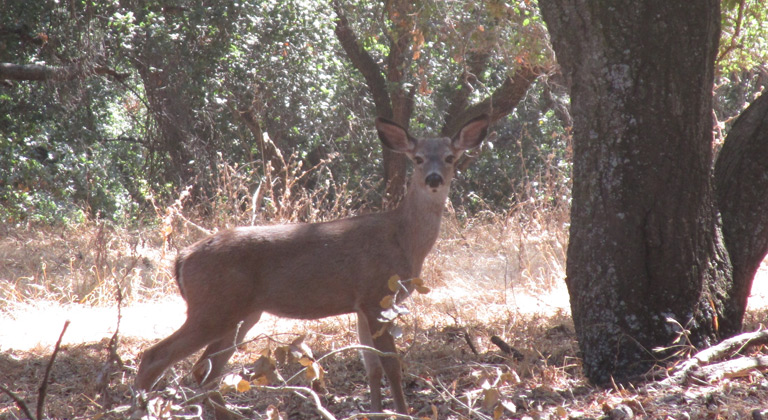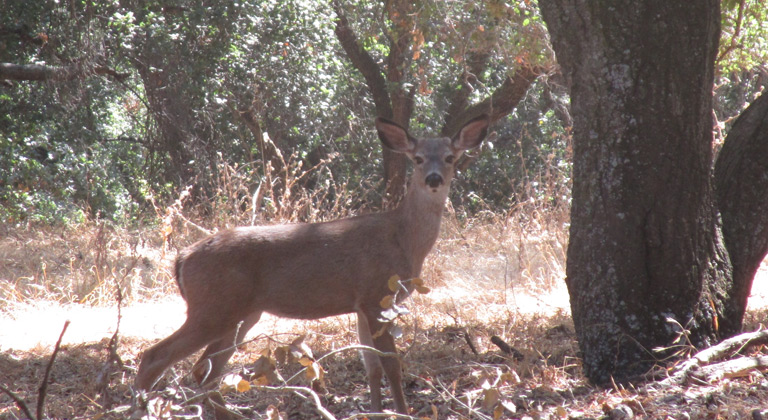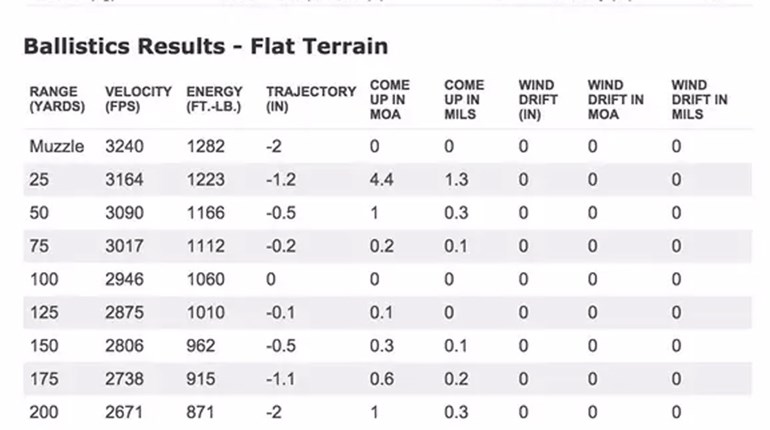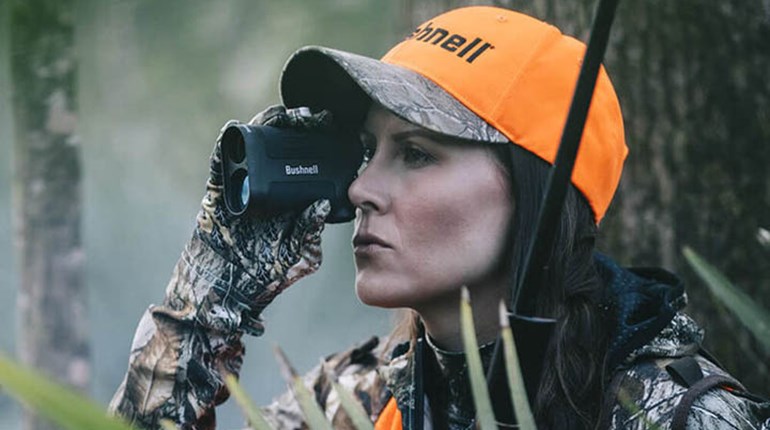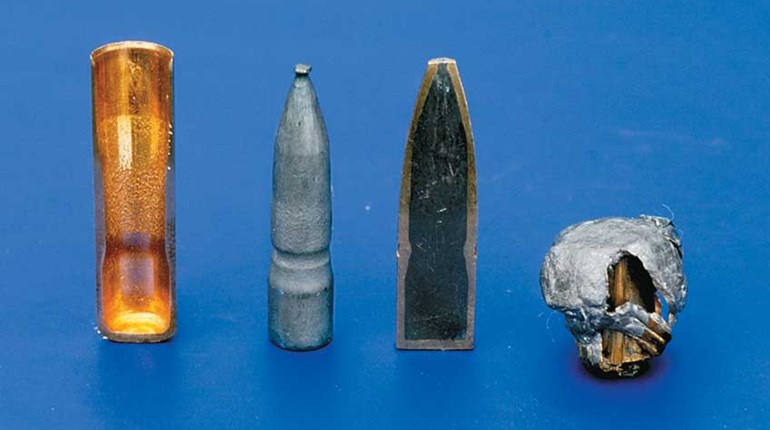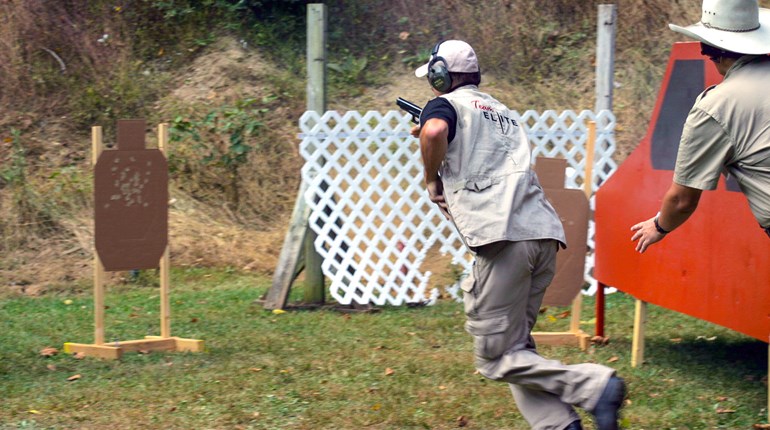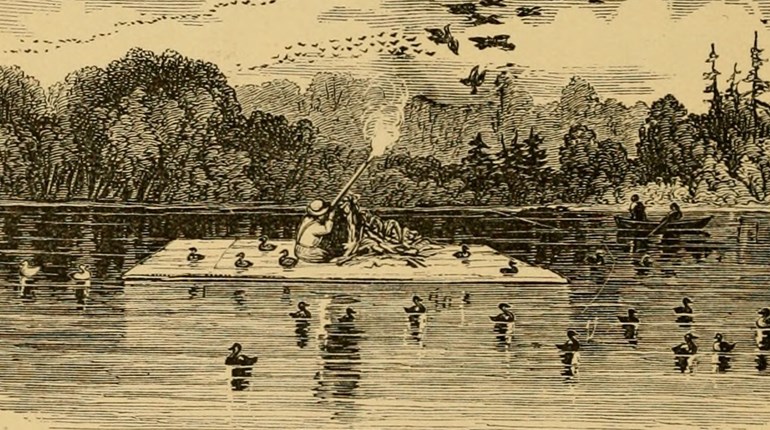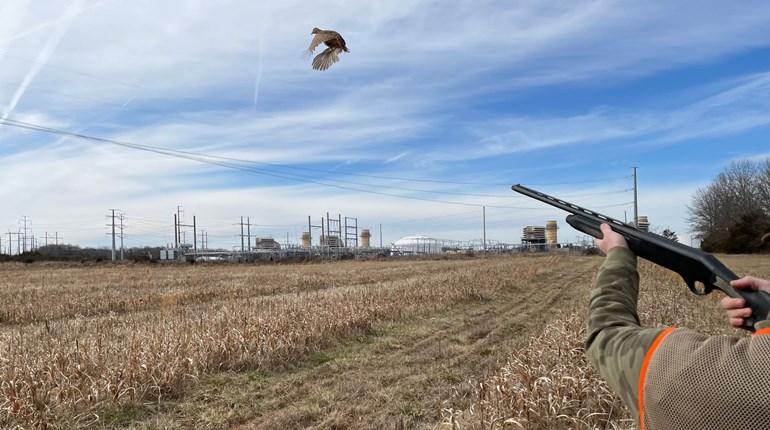
Last week, we talked about why hunting bullets are, at root, compromises; this week, we'll discuss bullet ogive profiles. But what is an ogive profile? Simply defined, it's the curved portion of a bullet forward of the bearing surface. Because a flat cylinder is undesirable for exterior ballistic reasons, rifle bullets have on of three ogives or "point profiles": flat nose (FN), round nose (RN) or pointed (spitzer). Of these, the spitzer is the most popular. Flat-nose bullets and round-nose bullets are typically used for hunting at ranges under 150 yards, where poor exterior ballistics caused by their blunt points are not a significant drawback. Pointed bullets are the best choice for hunting at medium and long ranges.
Flat-nose bullets are preferred for rifles with tubular magazines where a round-nose or pointed bullet might accidentally strike the primer of the cartridge in front of it and cause the cartridge to fire...with catastrophic results. FN bullets are easy to make and common in medium and heavy weights. Popular rifle calibers using FN bullets include the .30-30 Win. and .45-70 Gov't.
Round-nose bullets are optimized for heavyweight bullets as the point shape maximizes internal volume. RN bullets are easy to make and offer plenty of bearing surface. In large calibers for dangerous game, such as the .416 Rigby, .458 Win. Mag., and .470 Nitro Express, RN bullets are standard fare. In lighter calibers such as .270 Win., 7mm Rem. Mag., and .30-'06 Sprg., RN bullets are offered only in the heaviest weights. Popular RN bullets include the Remington Core-Lokt SP, Winchester Super-X PowerPoint and the Barnes Original.
Spitzer or pointed bullets may have a tangent-ogive profile (sharp) or a secant-ogive profile (sharper). Of these, the tangent-ogive profile remains the most popular as it allows more bearing surface with a suitably sharp point. Many general-purpose, medium-weight hunting bullets therefore are tangent-ogive spitzers.
Flat-nose bullets are preferred for rifles with tubular magazines where a round-nose or pointed bullet might accidentally strike the primer of the cartridge in front of it and cause the cartridge to fire...with catastrophic results. FN bullets are easy to make and common in medium and heavy weights. Popular rifle calibers using FN bullets include the .30-30 Win. and .45-70 Gov't.
Round-nose bullets are optimized for heavyweight bullets as the point shape maximizes internal volume. RN bullets are easy to make and offer plenty of bearing surface. In large calibers for dangerous game, such as the .416 Rigby, .458 Win. Mag., and .470 Nitro Express, RN bullets are standard fare. In lighter calibers such as .270 Win., 7mm Rem. Mag., and .30-'06 Sprg., RN bullets are offered only in the heaviest weights. Popular RN bullets include the Remington Core-Lokt SP, Winchester Super-X PowerPoint and the Barnes Original.
Spitzer or pointed bullets may have a tangent-ogive profile (sharp) or a secant-ogive profile (sharper). Of these, the tangent-ogive profile remains the most popular as it allows more bearing surface with a suitably sharp point. Many general-purpose, medium-weight hunting bullets therefore are tangent-ogive spitzers.











